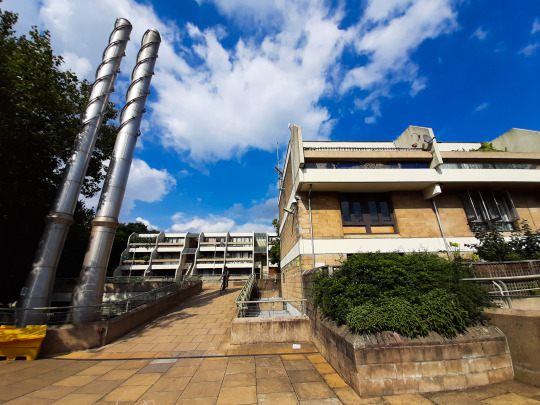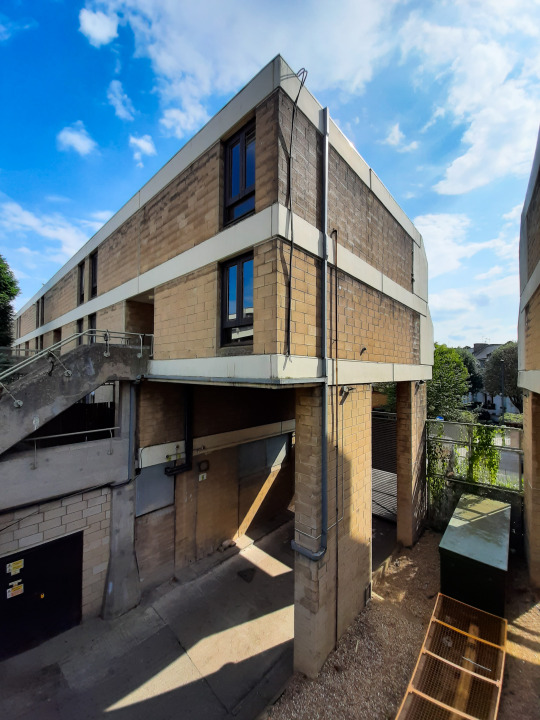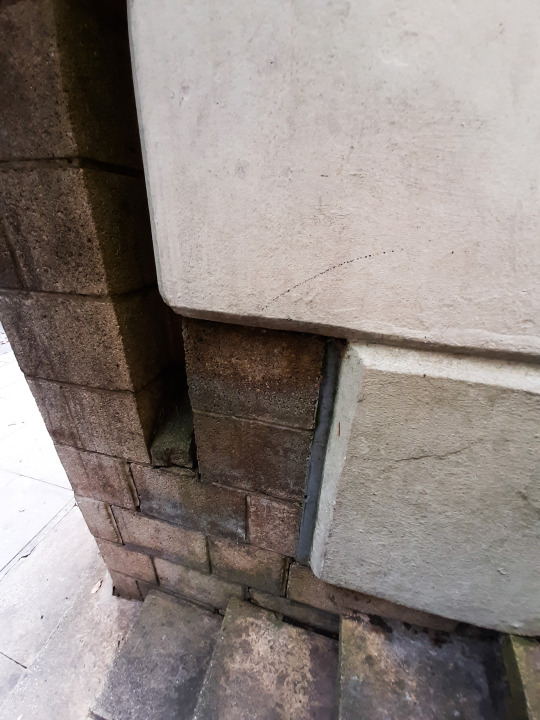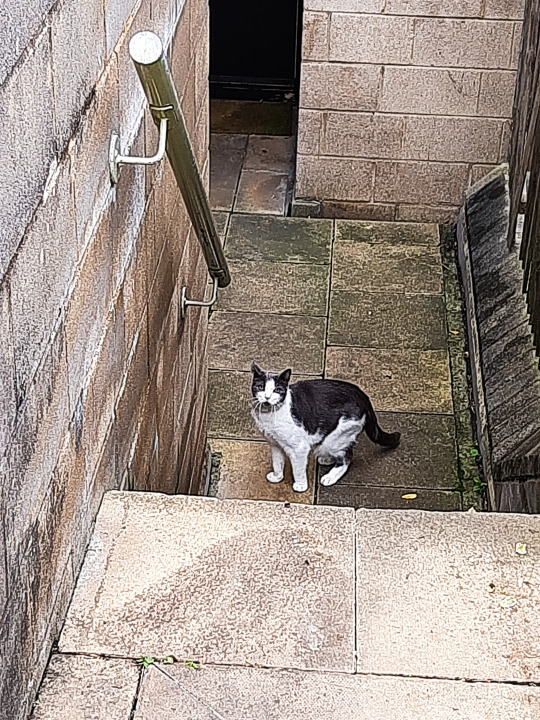#oakshott
Explore tagged Tumblr posts
Text


Early 17th Century Swept Hilt Rapier
I've had this sword for a couple of months, but I've been slow to post it while learning more about it. When I started out collecting, there were always a couple of dream swords that I'd love to own. On the top of that list were the schiavona and the swept-hilted rapier.
For the most part, rapiers have been out of reach for me. Decent swept hilts command significant money while determining their authenticity is a further challenge that adds unwanted risk. Fortunately, I found a sword within my fiscal comfort zone and quirky enough to attract my attention.
The genesis of rapiers first appeared in 15th Century Spain as a distinctly civilian sword. The progressively improved hand protection resulted in swords equally good in the defence as the offence. This allowed the users to forgo armour and earned these weapons the name espada roperas, 'swords of the robe'. As their use spread, the name mutated. They became known as la rapiere in France and rapier in England.
As so often happens, the term rapier came to encompass a wide selection of swords with various blade profiles. Broadly speaking, rapier describes a large civilian sword for dismounted combat with a complex hilt that offers significant hand protection and a thrust-centric blade. The latter is essential because complex hilts weren't limited to just rapiers; they were mounted on other blades more suited to cutting than thrust-based fencing. As Ewart Oakshott writes, "If you can cut off a man's arm with it, then it's a sword, if not a rapier."
However, as the use of armour declined in the 17th Century, its use peaked, with rapiers making their way onto the battlefield during the latter stages of the Eighty Years' War, where the Dutch fought for independence from Spain; the Thirty Years' War in Germany, and the English Civil War.
By the end of the 17th Century, a new, smaller rapier with its' own form of fencing began to appear in France. It was significantly shorter and lighter than what came before, with an even more specialised thrusting blade. This sword became known as the smallsword and persisted until the end of the 18th Century as the gentleman's sidearm to defend self and honour.


This recent addition to my collection is not an extravagant sword; in fact, it can be better described as 'munitions grade'. The hilt and blade are very functional, robust, and devoid of the decorations and markings usually seen on higher-grade rapiers. It is the type of sword that a musketeer might have worn in the service of one of the many pike and shot armies that fought in the wars that plagued Europe in this era.


Using the A. V. Normans' typology, my rapier has a Type 58 swept hilt and a Type 30 inner guard. According to A. V. Norman, this hilt type appeared around 1560 and remained until about 1635, although my sword likely dates to between 1600 and 1630.
This rapier is a shockingly large weapon. On paper, one and a quarter metres is just a number without real context. But when you stand it against your side and realise it nearly comes up to your chest, it takes on a whole new meaning. The sword is also heavy, a fraction heavier than my French AN XI Curassier swords, which up until now had been my heaviest swords by a good margin.
The sword is in excellent condition, without significant corrosion or other signs of neglect. Only the grip wire is a recent replacement but nicely done in the style of the time, with a Turk's head knot at both ends.


Stats: Overall Length - 1,245 mm Blade Length - 1,070 mm Point of Balance - 75 mm Grip Length - 153 mm Inside Grip Length - 100 mm Weight - 1,340 grams
#swords#antiques#military antiques#17th century#30 Years War#80 Years War#Rapier#Swept hilt#Cut and thrust
76 notes
·
View notes
Text

Oakshott Court, Camden
1969-76
Peter Tabori
Roman Halter Associates
James Gowan
Camden Borough Architects Department
Image from RIBApix
111 notes
·
View notes
Text
Wait a little. I have my plans. The first thing is to exaggerate my injuries. They'll come to you for news. Put it on thick, Watson. Lucky if I live the week out—concussion—delirium—what you like! You can't overdo it.”
If I were directing an adaption I’d do an immediate smash cut to Watson being THE biggest drama queen about this
(also love that Holmes actually trusts Watson to pull this off this time, instead of relying on tricking him to ~make it more genuine~ We are DONE with Method Acting Asshole Holmes around here)
“But Sir Leslie Oakshott?”
“Oh, he's all right. He shall see the worst side of me. I'll look after that.”
fjakjfkdjfksjfk okay Holmes is still trying to put one over on a doctor to keep up his facade. Except instead of flinging insults at his best friend as a strategy, it probably involves “ohhhh woeee is me, the painnn :((“ “Mister Holmes you can’t have more morphine yet”
36 notes
·
View notes
Text
"To be conservative, then, is to prefer the familiar to the unknown, to prefer the tried to the untried, fact to mystery...the convenient to the perfect, present laughter to utopian bliss."
Michael Oakshott (1901-1990) English Conservative philosopher.
48 notes
·
View notes
Text
The Blue Carbuncle pt 3
Goose Chase Intensifies!
the proprietor a horsy-looking man
Not to be confused with 'horsy men', who - as Sherlock informed us in a previous story - are quite different.
One thing I appreciate about Watson's critical view of literally everyone's appearance, is that you cannot know if a person is a villain or an innocent bystander just by reading the descriptions of them. Everyone is treated alike by his pen, even though this was a time at which people believed that "criminal features" were a thing. I suspect if I knew more about that particular "science" I'd be able to spot the criminals more easily, but I'm glad I can't.
"Sold out of geese, I see," continued Holmes, pointing at the bare slabs of marble. "Let you have five hundred to-morrow morning."
That's a lot of geese. That's an awful lot of geese. Five hundred geese? I can't even imagine five hundred geese. Maybe if I pictured them all on a plane,* but even then.
Five hundred geese. He sells five hundred geese a day? I mean, if he's sold out for the night and he's getting five hundred in the morning. You wouldn't think a dead geese would keep very long in an time before refrigeration. I get that we're between Christmas and New Year and people are buying their new year's goose and we're in London and a lot of people live in London (over 6 million), but still. BUT STILL. How does he have room for 500 geese in his shop? Does he just pile them up on the floor?
That's a lot of geese.
I suppose I did ask for more geese. Although these are only mentioned and not seen.
*I suspect no one will get this joke, but I'm going to make it anyway.
"It is straight enough. I should like to know who sold you the geese which you supplied to the Alpha."
Oh how I wish ACD had chosen a different name for the pub.
"Oh, it is a matter of no importance; but I don't know why you should be so warm over such a trifle."
Don't make trife out of geese, Sherlock. That wouldn't be nice at all.
"Warm! You'd be as warm, maybe, if you were as pestered as I am. When I pay good money for a good article there should be an end of the business; but it's 'Where are the geese?' and 'Who did you sell the geese to?' and 'What will you take for the geese?' One would think they were the only geese in the world, to hear the fuss that is made over them."
I love this man. He is wonderful. he's just trying to do his gd job and he's an unwilling participant in the biggest goose chase of all time!

He also deserves some of the reward for his trouble. Although, if he's selling 500 geese a day or a week or whatever, he's got to be making decent profit off that you'd think.
"If you won't tell us the bet is off, that is all. But I'm always ready to back my opinion on a matter of fowls, and I have a fiver on it that the bird I ate is country bred." "Well, then, you've lost your fiver, for it's town bred," snapped the salesman. "It's nothing of the kind." "I say it is." "I don't believe it."
The classic 'please settle the wager between my friend and I ploy. Excellent. And we're once again at the point of 'Your goose is in another castle'. I was hoping there were more steps to the chase.
We kind of need the Benny Hill theme playing in the background.
Sherlock Holmes looked deeply chagrined. He drew a sovereign from his pocket and threw it down upon the slab, turning away with the air of a man whose disgust is too deep for words. A few yards off he stopped under a lamppost and laughed in the hearty, noiseless fashion which was peculiar to him.
Aw, he's having fun.
"Ha! this may save us a visit to Brixton Road," whispered Holmes. "Come with me, and we will see what is to be made of this fellow."
Noooooo, I wanted you to have to run across town again to go and visit Mrs Oakshott. Bah!
The man hesitated for an instant. "My name is John Robinson," he answered with a sidelong glance. "No, no; the real name," said Holmes sweetly. "It is always awkward doing business with an alias." A flush sprang to the white cheeks of the stranger. "Well then," said he, "my real name is James Ryder."
Seriously? It was that easy? You give up your name that easily? Spine made of silly string. You are not cut out for a life of crime, Mr James Ryder. You fold like cheap paper. You do not deserve the goose.
"Pray step into the cab, and I shall soon be able to tell you everything which you would wish to know." The little man stood glancing from one to the other of us with half-frightened, half-hopeful eyes, as one who is not sure whether he is on the verge of a windfall or of a catastrophe. Then he stepped into the cab...

What is this? So the maid is the brains of the operation, I guess. But then you were stupid enough to lose track of the goose you fed a priceless stolen jewel to. I guess we couldn't have expected much from you in the first place.
"Pray take the basket-chair."
I know its not. I know they weren't even invented at the time. But I'm imagining one of those hanging egg basket chairs, and Mr Ryder just gently swinging to and fro as Sherlock pulls on his slippers, both he and his fate hanging in the balance.
"Or rather, I fancy, of that goose. It was one bird, I imagine in which you were interested—white, with a black bar across the tail." Ryder quivered with emotion. "Oh, sir," he cried, "can you tell me where it went to?"
I actually feel sorry for this guy. He's kind of pitiful. Clearly he does not have the common sense or brains to be good at crime. He's sitting here not putting two and two together that Holmes knows he's looking for a specific goose and Holmes knows his name and his job. I really feel like it must be the maid who is behind all this and putting pressure on him to find the lost goose or else, because otherwise I cannot see how he's managed this far without giving himself away.
"It was Catherine Cusack who told me of it," said he in a crackling voice.
Yep, she's definitely the one behind it all. There's no way this guy came up with the thing.
You made some small job in my lady's room—you and your confederate Cusack—and you managed that he should be the man sent for.
I don't care what the conclusion to the story is. Maybe she made him think it was his idea, but it was definitely her.
"There was a little shed in the yard, and behind this I drove one of the birds—a fine big one, white, with a barred tail. I caught it, and prying its bill open, I thrust the stone down its throat as far as my finger could reach."
That's certainly an image... what the actual?
"Send him to jail now, and you make him a jail-bird for life."
I suppose some things never change. I mean, I'm not sure I agree that he'll never commit a crime again. But I can't deny Holmes' point here.
"If you will have the goodness to touch the bell, Doctor, we will begin another investigation, in which, also a bird will be the chief feature."
Holmes really is enjoying himself in this one. The joke earlier (that I didn't quote) about how the goose 'laid a blue egg', this joke about another investigation involving a bird (I assume their dinner). He's really feeling the spirit of the season.
This is probably one of my favourite stories, thanks to the utter slapstick of it all. A wild goose chase all over London, the mix up of the mistaken geese. The fake bet. It's just a fun story. A Christmas pantomime, which I can't imagine isn't intentional, as I believe Mother Goose - which involves a bet, a goose that lays golden eggs, and the owner of said goose trying to get her back, is one of the oldest pantomimes.
I still think the maid was behind it all, though. I think she manipulated him into taking it and was planning to blackmail him over it or seduce him into giving it to her or something like that. I know that's not in the text, but it just makes more sense to me than the idea that Ryder, who couldn't keep up a lie for more than two seconds under the slightest questioning, carried all of that out under no influence but his own. Holmes even calls her Ryder's "confederate" and yet doesn't follow it up.
...
And one last time, just for fun.

22 notes
·
View notes
Photo

Not all social housing in the 1960s was about tower blocks. High-rise buildings were unpopular with tenants, lifts were costly and broke down, and the surrounding lawns were hard to maintain. Moreover, on the slopes around Hampstead Heath in London, towers would have blocked views towards St Paul’s Cathedral. This area became part of the newly created borough of Camden in 1965 and a visionary new chief architect, Sydney Cook, assembled a bright team of assistants to find an alternative form of housing. One of these young architects was Peter Tábori, who has died aged 83. The Whittington estate which he designed, originally known as Highgate New Town, exemplified a solution that was both innovative and successful.
Camden had identified an area of semi-derelict Victorian housing for redevelopment next to Highgate’s east cemetery, where Karl Marx is buried. Tábori realised that, on such a steep hillside, lines of flats and maisonettes could be stacked one above the other and entered from a common entrance at mid-level on the uphill side. Car parking could be set into the hill between these terraces and decked over with pedestrian walkways and children’s playgrounds.
He was inspired by medieval Italian hill towns and an internationally regarded scheme near Berne by the Swiss architects Atelier 5, but the greatest impression is of generous, humane spaces. The scheme was designed in 1968-70 but not completed until 1979 after the original contractors went bust.
The concept fitted perfectly with Cook’s own ideas and Tábori was a natural addition to the team. Other assistants working on similar solutions went on to greater recognition: Neave Brown’s complex terraces at Fleet Road (now Dunboyne Road) and Alexandra Road are listed, as are Gordon Benson and Alan Forsyth’s mainly two-storey houses on a steep slope at Branch Hill, Hampstead.
Together the group established a distinctive style for Camden’s best social housing using crisp white concrete, densely packed but relatively low-rise. Tábori’s Highgate New Town had the benefit of simplicity, in the design of the terraces and in his determination that public and private spaces should be clearly separated. This last avoided the problems faced by estates where indeterminate space led to vandalism. Mark Swenarton’s book Cook’s Camden (2017), to which Tábori generously contributed, records the inspiring story.
Highgate New Town was finely finished, the external concrete contrasting with handsome internal joinery. Cook claimed that “the quality of [Tábori’s] work isn’t just double site capacity at low rise, or all the higher standards, but that he did it all below yardstick”, the restrictive budget code imposed by governments at the time. In fact, Camden’s fine housing was made possible by its high domestic rates income and other London boroughs could not match its quality. Many of Tábori’s maisonettes remain tenanted, but those sold under “right-to-buy” legislation now fetch eye-watering prices.
Tábori went on to design a second scheme in 1971, Oakshott Court, Polygon Road, with three L-shaped terraces, but he was disappointed by a decision made in 1974 to use brick, apparently in deference to its location near St Pancras Station. A smaller scheme of 15 flats on the corner of Mill Lane and Solent Road followed in 1973 after Cook’s retirement, including four wheelchair-accessible units and five for elderly people. He also worked on a visionary programme with the architects/engineers Arup Associates for building over the main railway tracks that run through Camden, an attempt to gain space in the overcrowded borough.
He was born Peter Stroh in Budapest, the son of Istvan Stroh, a professor of mathematics, and his wife Erzsebét (nee Szanto), a former opera singer. She subsequently married Michael Tábori, an economist whose father had died at Auschwitz. Both men had been imprisoned by the communist government and following the 1956 uprising in Budapest, Peter too was arrested. On his release in December 1956 he, Erzsebét and Michael emigrated to London via Vienna, along with other members of Michael’s family. Thenceforth Tábori used his stepfather’s surname and adopted it formally on becoming a British citizen in 1966.
Tábori learned English and technical drawing with an architect, Cecil Epril, and in 1958 entered Regent Street Polytechnic (now the University of Westminster). His tutors included Richard Rogers, who inspired his interest in mass housing, and who himself designed an (unbuilt) hillside scheme in Croydon inspired by Atelier 5. Tábori assisted on Rogers’s first built house, Creekvean, with Su Rogers and Norman Foster.
Tábori also spent two years working for Ernö Goldfinger, the Hungarian-born architect immortalised by Ian Fleming, before completing his qualifications. The final external examiner was Denys Lasdun, who gave him a job assisting on the University of East Anglia, another hillside building with a stepped section where he learned about concrete techniques. However, when in 1967 the chance came to work for Cook and develop his own housing interests, Tábori seized the opportunity.
He left the borough in 1984 and formed a private practice with John Green and Bob Winning, working mainly in Hamburg, Toulouse and Soweto.
Tábori married Angelika Schiel, a model, in 1962. They had three sons, Kris, Michael and Gabor, but divorced in about 1980, and Angelika, who became an upholsterer, died in 2016. Peter had a fourth son, Tom, in 1984, with Anne Saville, a welfare adviser at the charity Gingerbread, but the couple later separated. He is survived by his sons.
🔔 Peter Tábori (Peter Stroh), architect, born 15 January 1940; died 23 February 2023
Daily inspiration. Discover more photos at http://justforbooks.tumblr.com
16 notes
·
View notes
Text
I mean, it's less uncommon of a gripe but weapons and armor from the wrong time period urk me a great deal. Like so often some Arthurian shit will have Excalibur looking like an Oakshott type XII or XIII

when the mythology is primarily thought to be set 200 to 400 years prior, well before proper crossguards were invented. It would have more likely looked like a fancier version of this:


This is.....niche. Do period-appropriate chickens even still exist? Idk anything about chickens. I like the fancy ones.
#swords#the one time i miss my old username#because someone could say “okay tumblr user timeswordsman”
81K notes
·
View notes
Photo

Another #thicketquilt pieced....now, I just have to quilt it🤪#modernquilt #indahbatiks #me+you #oakshott
1 note
·
View note
Photo

A recorded past is no more than a bygone present composed of the footprints made by human beings actually going somewhere but not knowing (in any extended sense), and certainly not revealing to us, how, they came to be afoot on these particular journeys.
- Michael Oakeshott
#oakeshott#michael oakshott#quote#femme#outdoors#history#society#journey#philosophy#british#rural#tradition#custom#heritage#conservative#tory
27 notes
·
View notes
Photo






Been working on my blade’s geometry. That took me a whole week of file work, every after work and at night. After that, two weeks of hand polishing it using oil and several grits of sand paper.
Doesn’t looks half bad, I think.
#sword#medieval#blade#polish#polishing#tools#reenactment#living history#livinghistory#oakshott xii#oakshott 12#oakshott type xii#oakshott type 12
4 notes
·
View notes
Photo

Port Kembla, New South Wales by Stephen Oakshott
466 notes
·
View notes
Photo










“Stoneleigh Terrace II - Whittington Estate”, London, N19 [1973-1978] _ Architect: Peter Tábori _ Photographs by Spyros Kaprinis [18.09.2021]
“The Metropolitan Boroughs of St. Pancras, Holborn and Hampstead merged to become Camden in 1965. Under the stewardship of Sydney Cook, the new borough quickly became renowned for its radical housing.
Cook appointed a ‘dream team’ of architects working out of Holborn Town Hall, led by Neave Brown. These included Peter Tábori, who was born in Hungary in 1942 and studied at the Regent Street Polytechnic. When he was a student, he asked the local authority for a diploma project and was given the brief for Highgate New Town (Whittington Estate).
After working for Ernö Goldfinger and Denys Lasdun, Tabori joined Camden Architects Department – Sydney Cook had been so impressed by Tábori’s student work that he was employed to develop it into the final scheme. The estate was built between 1973 and 1978 overlooking the cemetery. It comprises six terraces with strong horizontal lines of balconies and cornices and vertical cross walls. Between each terrace is a pedestrian walkway, with trees and shrubs to soften the architecture.
One of the key figures in the development of Camden Council’s ‘golden age’ of progressive social-housing in the 1970s, Peter Tábori is best known for his distinctive ziggurat-style estates.
Born in Hungary in 1942, Tábori moved to London to study at the Regent Street Polytechnic. As a student, Tábori asked the local authority for a diploma project and was given the brief for Highgate New Town. After working for Ernö Goldfinger and Denys Lasdun, Tábori joined Camden Architects Department – the borough architect Sydney Cook had been so impressed by Tábori’s student work that he was employed to develop it into the final scheme.
Tábori ’s designs developed Neave Brown’s principles of estate housing which centred around individual front doors and private open spaces, resulting in the distinctive stepped apartments which can be seen on the Whittington Estate and at Oakshott Court in Somers Town.”
https://www.themodernhouse.com/past-sales/stoneleigh-terrace-2/
https://www.themodernhouse.com/directory-of-architects-and-designers/peter-tabori/
#Stoneleigh Terrace II#Whittington Estate#London#N19#1973#1978#Peter Tabori#Sydney Cook#Regent Street Polytechnic#Camden Architects Department#Camden Council#Ernö Goldfinger#Denys Lasdun#Brutalism#Housing#Architecture#Neave Brown#2021#Spyros Kaprinis#Peter Tábori
187 notes
·
View notes
Photo

What’s on Walking tour Oakshott Court: The Model Estate Sunday, 26 June 2022, 3–4.30pm
Somers Town is flat. Yet in its midst lies a remarkable group of housing which carries the flavour of an Italian hill town. Built during the golden age of Camden’s Architect’s Department, Oakshott Court was designed by an emigre from the 1956 Hungarian Revolution, taken over by a Polish survivor of Auschwitz and completed by a leading Scottish architect.
1973-76. Architects: Peter Tabori, Roman Halter and James Gowan
Set off and ends at the People’s Museum Somers Town, where refreshments can be obtained afterwards and publications about Camden Council Housing. Organised by Somers Town History Space
More information and tickets available from Eventbrite
Image © Stefi Orazi
6 notes
·
View notes
Note
I greatly enjoy posts on conservatism. As a Brit, I can say my conservative beliefs are very much rooted in Burke and Oakshott and also heavily drawn on Scruton's cultural writings. I am curious to know what kind of American conservative are you? Where would you draw your main inspiration from as you seem to quote from a wide range of conservative thinkers who may not necessarily agree with each other? Thank you and keep up the good work.
I passed over this question, apologies for not replying to it earlier. I've mentioned in other posts that my primary influences are Edmund Burke and John Locke. My own perspective is a modified synthesis of their philosophies. I believe (perhaps contrary to popular opinion) that their ideas are not only reconcilable, but that they require one another). Other thinkers that have inspired me in some way are Ludwig Von Mises, George Santayana and Milton Friedman ( I mean his political ideas not his economic theories).
And glad to hear you were a fan of Roger Scruton. His recent death was a loss for the world.
14 notes
·
View notes